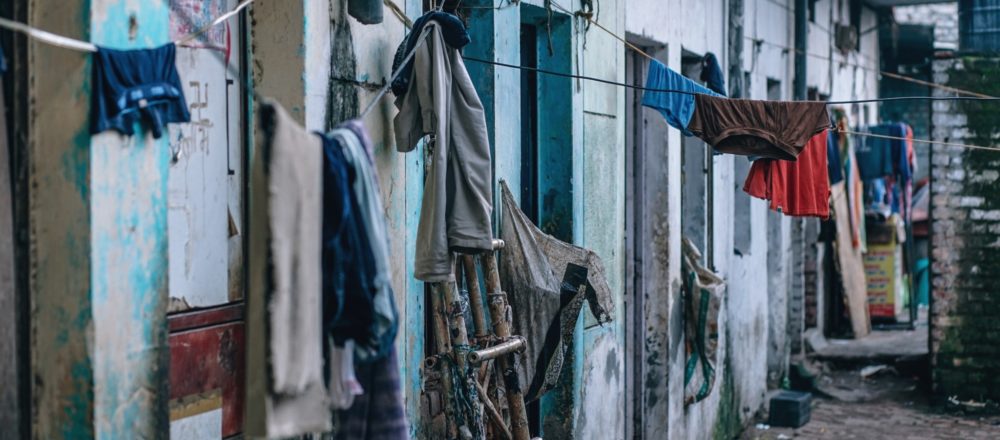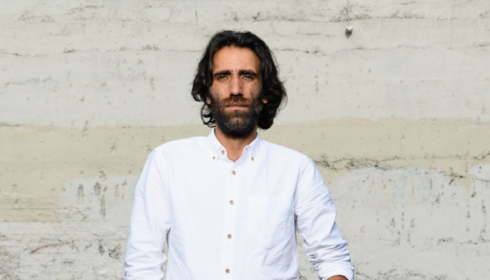In one of the opening scenes of Capharnaüm (2018), a boy in a striped prison uniform enters a crowded courtroom.
Zain (Zain al-Rafeea) is already a celebrity of sorts, a child who brings a lawsuit against his own parents with the encouragement of a current affairs TV show. He has no birth certificate and no ID card. A medical examiner at the prison guesses him to be around 12 years old. He is serving time for a stabbing in Beirut’s Roumieh Juvenile Prison.
He is suing his parents, he tells the judge, for giving him life.
The title of this neorealist drama directed by Nadine Labaki – who appears in the film as Zain’s lawyer – refers to “a confused jumble; a place marked by a disorderly accumulation of objects”. This title well describes Zain’s chaotic, affectionless home, which we see in a series of flashbacks and events that brought him to face his parents in court. On the top floor of a crumbling concrete apartment building, crowded with neighbours, Zain’s mother and numerous siblings are at work, dissolving Tramadol tablets in water and soaking the mixture into clothes. Beside them, a baby is restrained by a metal chain around her ankle. The clothes are later smuggled to an older son in prison, who re-soaks them to extract the opioids, and sells them to his fellow inmates.
After his parents force his 11-year-old sister Sahar (Cedra Izam) to marry a sleazy local shopkeeper, Zain runs away to take his chances in the streets. In an amusement park populated by various outcasts, he meets Rahil (Yordanos Shiferaw), an undocumented migrant from Ethiopia. She works illegally as a cleaner, concealing her baby son, Yonas (Boluwatife Treasure Bankole), in a shopping trolley which she carries everywhere. Living in constant fear of deportation and waiting in vain for her various employers to pay her, she has little to offer Zain – except the first loving home he has ever known. In their tiny shanty house, he becomes first Yonas’s live-in babysitter and then his brother.
Some of the most harrowing scenes of the film occur after Rahil disappears, leaving Zain and Yonas to fend for themselves. Ignored by all adults except for a creepy people-trafficker keen on buying Yonas, Zain is forced to draw on the skills he’d learnt from his parents to keep his brother alive. Finding an old forged prescription in his bag, he buys Tramadol from a pharmacy and crushes the tablets while Yonas plays beside him. What follows is a blur of narrow escapes as Zain, with Yonas in tow, begins selling “Tramadol shots” in the streets.
In one scene, Zain tries to coax Yonas into waiting for him on a busy roadside. In a bleak parallel to his own upbringing, Zain is finally forced to tie Yonas up to stop him from wandering out into passing traffic. However, he can’t harden himself to ignore the baby’s cries and walk away. From Rahil, who clutched at any opportunity to give Yonas something of a childhood – through caresses dealt out hurriedly in a toilet cubicle, or a birthday cake scavenged from a bin at her work – Zain learns that he too can choose to show love, no matter the circumstances. But when he is faced with the choice between selling his brother or starving together, he is shown the limits of his agency.
Looking on, it is not Zain’s impossible choices that the audience is invited to condemn. It is the choice the others in the street make to continue walking by, ignoring his plight.
In this way, the film resists an individualist interpretation of the many abuses of the rights of its child protagonists. By opening the film with the gimmicky premise of an audacious child bringing a lawsuit against his shiftless parents, Labaki tricks the audience into expecting that there will be a victory to be won here, in the form of a verdict against these admittedly repellent characters. But Zain’s parents themselves invite the court to go ahead and judge them. Themselves undocumented and unable to afford to register their children – themselves brought up in poverty and violence – they claim they had no other options.
It becomes clear that the bigger injustice at the heart of this film is not Zain’s parents’ choice to give him life when they were unable to provide for him. Rather, it is the ‘rigid legalism’ that is applied, in the words of Ghassan Hage, to society’s others: racialized people, asylum seekers, and in this case, the poor. The laws that leave a pregnant Sahar to die at the doors of a hospital, turned away because she ‘has no papers’. The laws that lock Rahil away from her baby and into an overcrowded prison cell.
It is tempting, watching Capharnaüm, to end the analysis there. And yet, for an Australian audience, where we go about our lives while children are imprisoned on Nauru, directing our condemnation elsewhere is impossible. In this film, Labaki shows the ways in which parents’ failure to comply with seemingly meaningless bureaucratic requirements and criteria can condemn children to a kind of purgatory. They are unable, in the words of an official pressing Zain for a nonexistent ID, to provide “proof” that they are “human”. Yet as the film makes clear, the responsibility for their lives remains all of ours.



